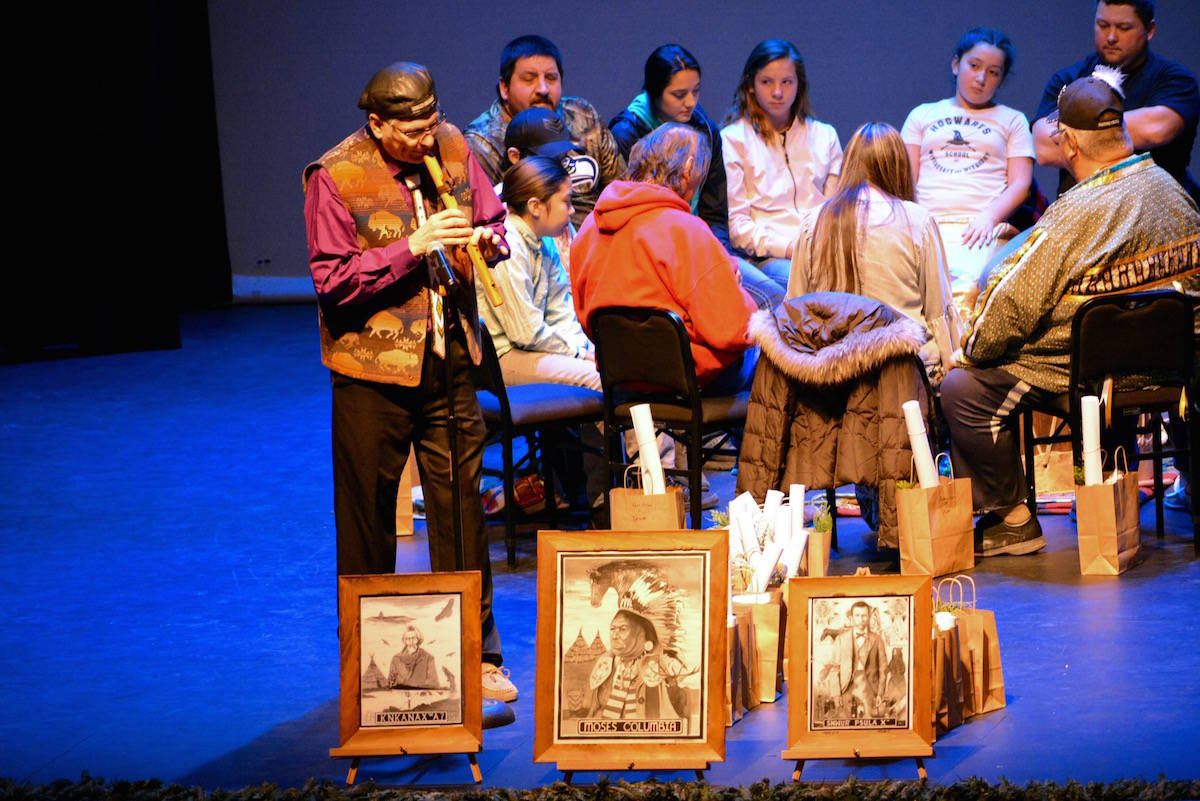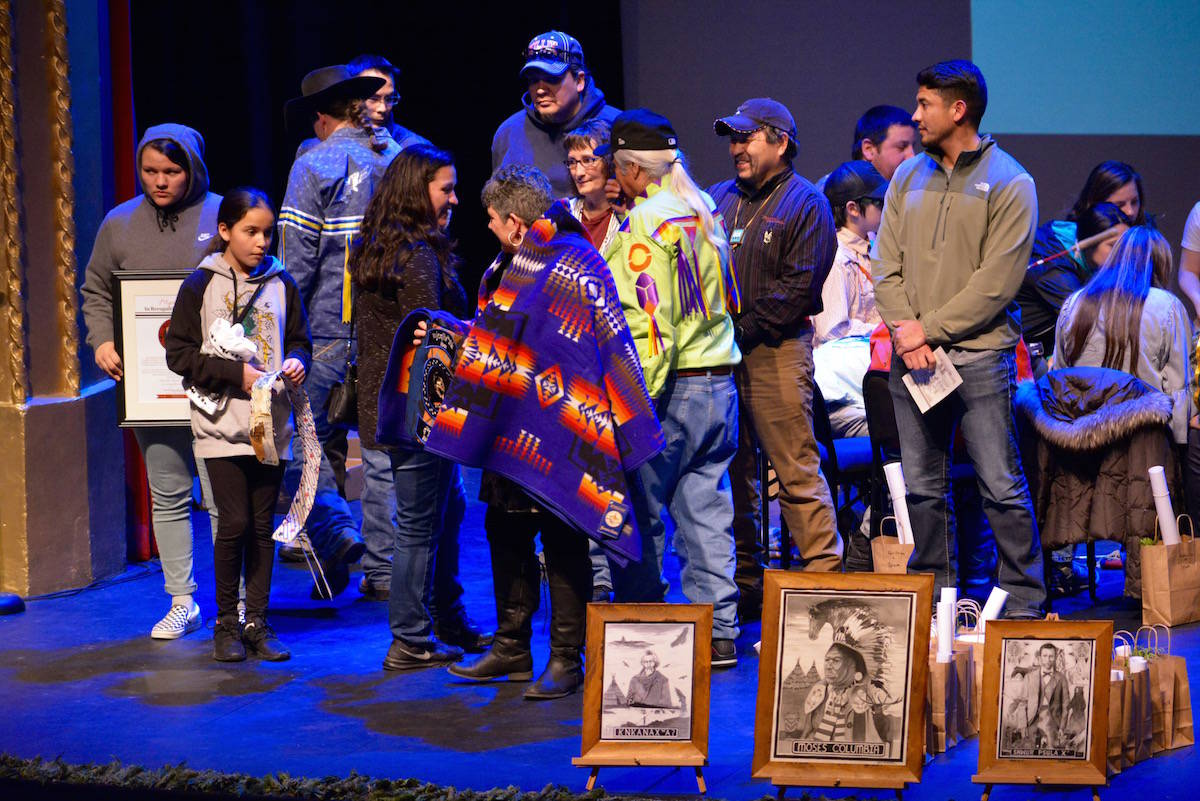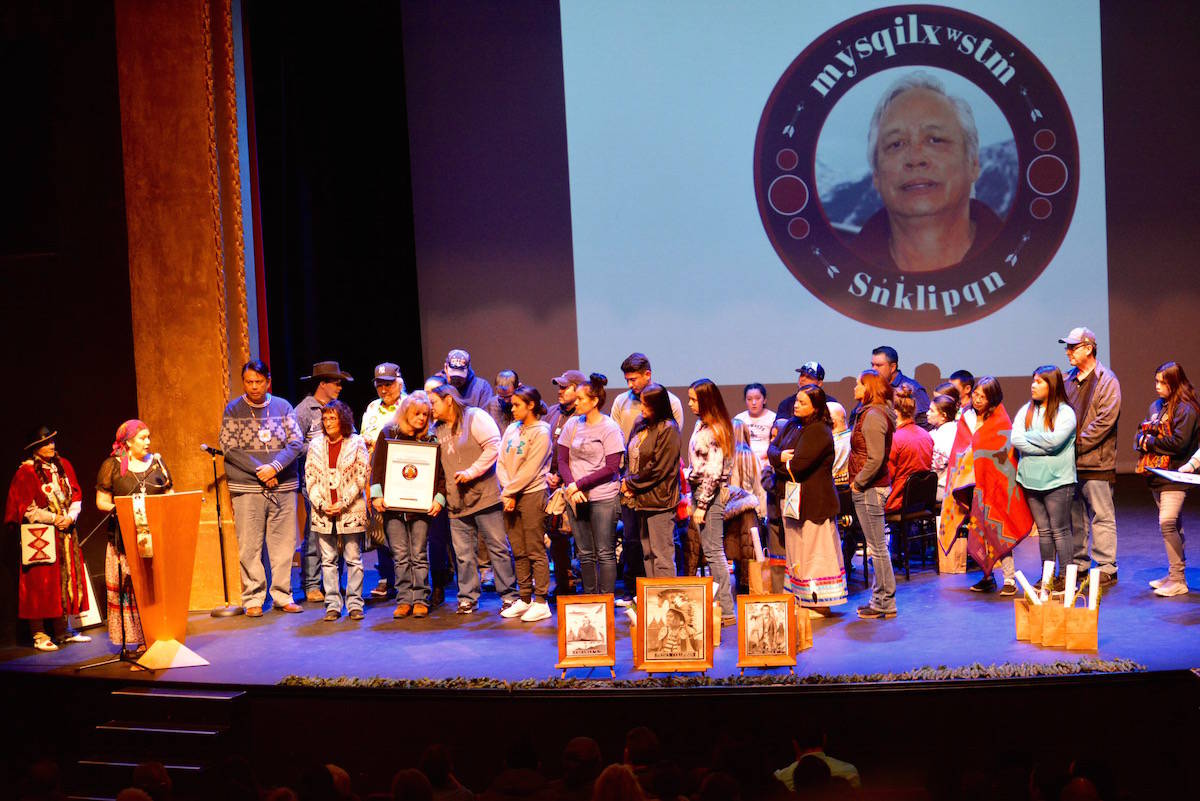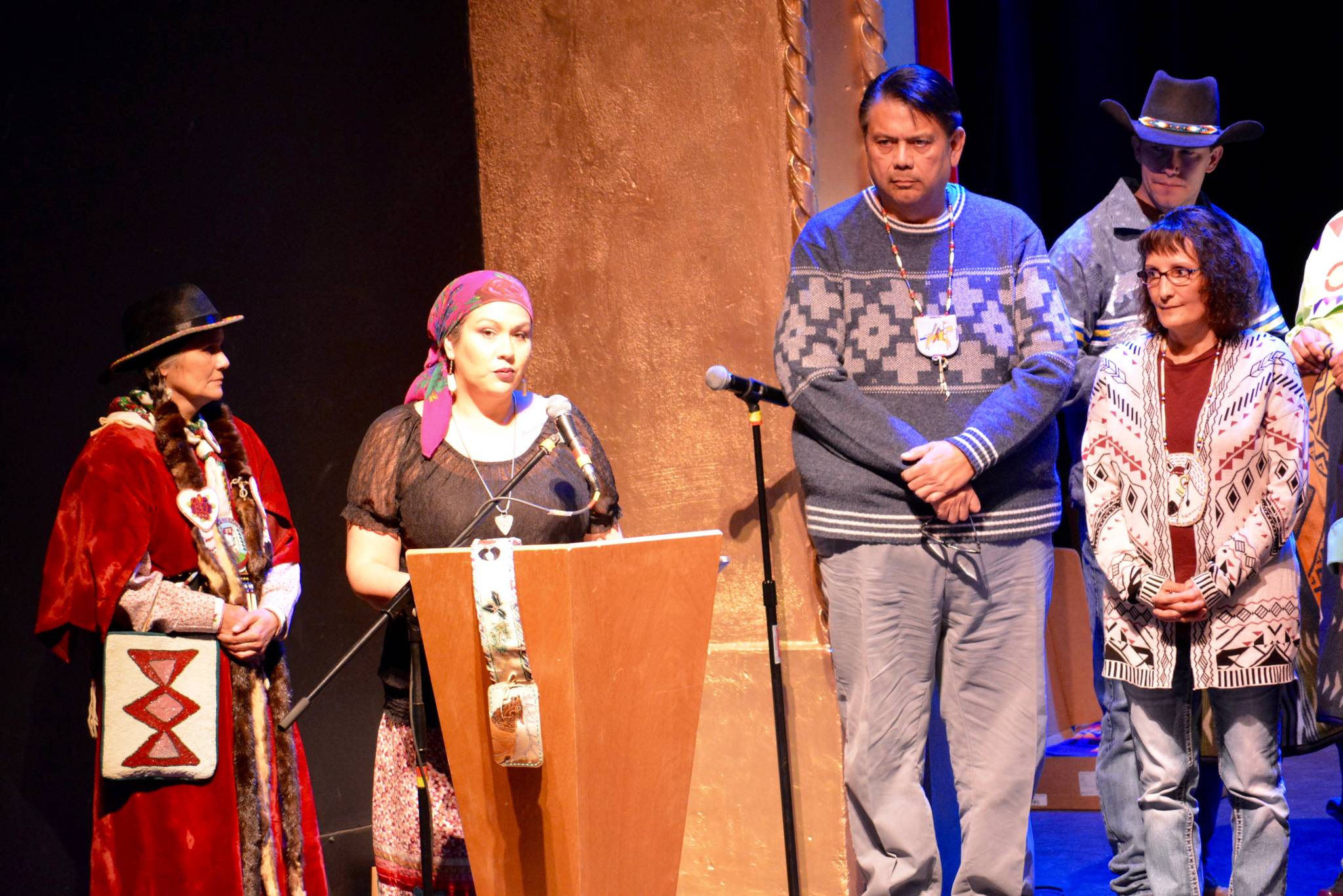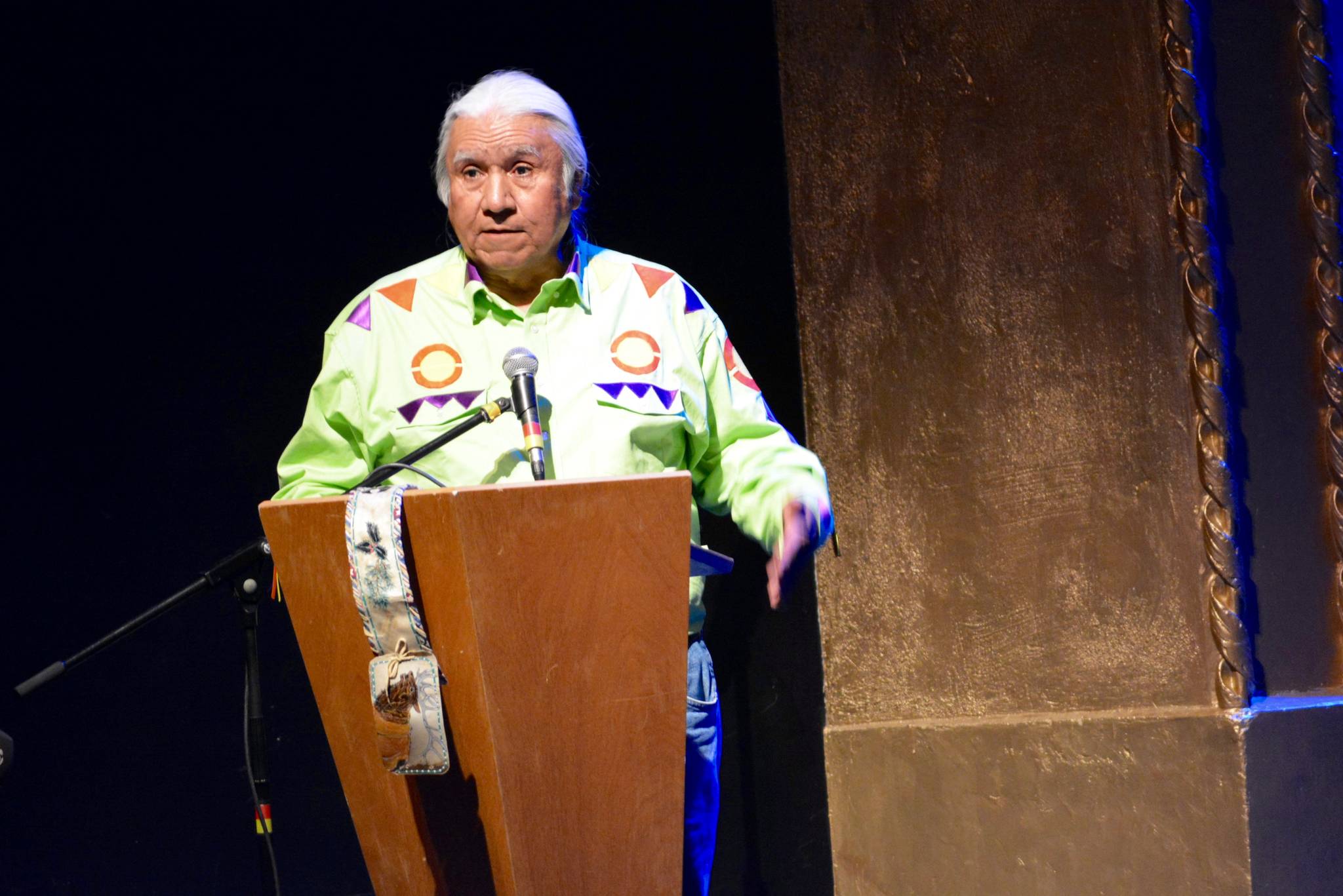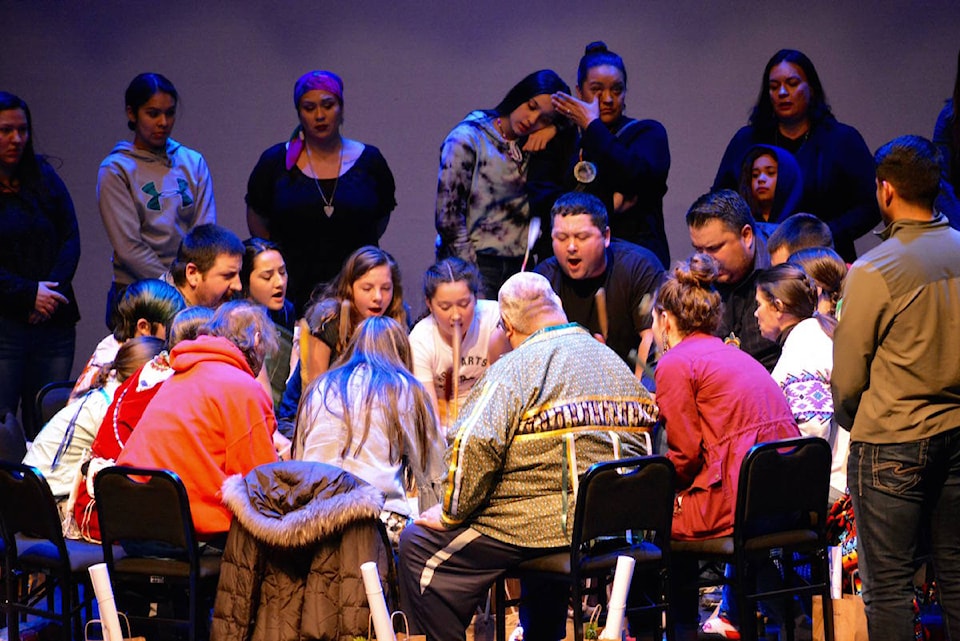A First Nations event at the Capitol Theatre on Thursday seamlessly melded politics, law, family relations, ceremony, science, visual art, drumming and singing, often with dozens of people on the stage.
Throughout the Sinixt Celebration and Honour Ceremony, one date was lauded as a historic one for the Sinixt: March 27, 2017.
That’s the day Rick Desautel, an American Sinixt, was found not guilty of shooting an elk out of season in Canada as a non-resident — a precedent-setting decision in Canadian aboriginal law.
When Desautel killed the elk and was arrested and charged, it was part of a plan.
“It was a tribal decision,” Michael Marchand, Chairman of the Colville Confederated Tribes in Washington State, told the sold out audience at the Capitol. “We decided, whoever hunts and gets arrested, we will get the best lawyer and support him. Ricky is the spearpoint, he is the one who did it. He won this case for us.”
The judge decided that Desautel had an aboriginal right to hunt regardless of the border and that the Sinixt, declared extinct in Canada in 1953, are legitimately an aboriginal group in Canada.
The provincial government appealed the decision to the B.C. Supreme Court where Desautel’s acquittal was upheld. Now the province has appealed it to the B.C. Court of Appeal.
Much of the evening was dedicated to ceremonies honouring three people: Desautel and recently deceased elders Melanie Burris and Virgil Seymour.
Each ceremony was an elaborate affair, with speakers praising the honorees, whose families, often including grandchildren, gathered onstage to be recognized and receive gifts.
The ceremonies had a communal and familial atmosphere because of the large contingent of Sinixt people from Washington State — just under a third of the audience of 350. The speakers often spoke to the audience as they would to their friends and family, rather than to strangers.
The ceremonies would have otherwise been performed south of the border, but they were moved to the Capitol Theatre as part of a recognition of the Desautel decision that for many speakers represented a homecoming.
Several speakers, including Seymour’s daughter Stevie Seymour, talked of the emotional impact of entering north-of-the-border Sinixt territory,
“For all the people who came up,” she said, “I say this on behalf of my dad and the rest of the family: Welcome home. I know you felt it in your bones when you came up here.”
Rodney Cawston, speaking in the honouring ceremony for Desautel, quoted one of his elders about the Sinixt territory north of the border: “When you walk in that country, it will know your footsteps.”
In a departure from the ceremonial and family-oriented proceedings, Cody Desautel, natural resource director for the Colville Confederated Tribes, said the tribes have more professionals working with fish and wildlife than the provincial government has in the entire Kootenay Boundary.
His power point presentation described his department’s extensive initiatives in fish and wildlife research and restoration, and their goal of restoring fish populations above the Chief Joseph and Grand Coulee dams and beyond.
Desautel couched his presentation in the global context of climate change, wildfire mitigation, biodiversity and demographic shifts.
Mark Underhill, the B.C. lawyer who defended Rick Desautel in both trials, spoke about what he had learned from the trials.
He cited a Supreme Court of Canada judge who ruled in 1990 that what separates aboriginal people from all other minority groups is that they were already here, and this gives aboriginal people their special status in the constitution. Therefore the rights of pre-existing aboriginal societies need to be reconciled with the sovereignty of the crown.
Underhill told non-aboriginals in the audience that reconciliation is also needed at the personal level and this could include staying after the event and talking with Sinixt people.
“I encourage each of you, if we have time, stay and talk, because that is how reconciliation happens, through individual conversations.”
Stevie Seymour asked the Capitol Theatre audience to close their eyes.
“Think of your home,” she said. “I want you to picture it, picture the walkway, the door, you open the door, what does it smell like, where is your favourite spot in your house, where do you feel most comfortable. Get that feeling of being home.
“Now I want you to think about what it would feel like to have someone come into your home, to feel afraid and threatened, and fear for your life and your children’s lives. What to you do? Maybe you go hide in the closet. After you hide and are in there for a while somebody comes and tells you because were in your closet too long, you don’t exist. You are not here.”
Master of ceremonies Shelly Boyd told the Star in an interview that she felt honoured by Nelson’s reception.
“It was like Nelson was opening their home to us. It felt very loving. I was touched by how they helped us with the honouring.”
Boyd said the more than 100 Colville Tribes members who attended were very happy with the ceremony and the trip to Nelson.
“It lifted them up. It made them hopeful. It was like a kind of reconciliation.”
